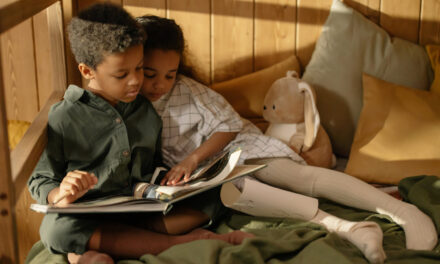Do you want your children to smile when they think of meal time?
One of our grown children recently said, “I loved dinner at our house. We were either laughing, playing, crying, or yelling. No matter what, we were all there, and we felt loved and secure because we were together around the table.”
Foster Trust
Meal time is foundational in the life of a child. When kids sit at a table daily with adults and siblings who love them, look them in the eyes, and share life’s ups and downs, they gain a sense of belonging, trust, and security. The table becomes a refuge where self-confidence and warm family relationships grow.
Imagine a child sitting at a table dips a piece of chicken in a blob of ketchup and says, “My friend was mean to me today.” The child has transparently put his heart on the table. He is testing the water to see if the table is a safe place. Wise parents respond by asking questions like, “What happened?” or “What did your friend say that upset you?” Questions like these invite children to share their honest thoughts and emotions and provide time to process or draw conclusions in a safe environment. Parents who listen well without interrupting allow their children to unscramble feelings and make logical conclusions and choices. The table becomes a place of trust and security where you can solve life’s problems together.
Strengthen Family Bonds
The response of a parent or sibling at the table can also strengthen family bonds and help a child grow. For example, a sibling may say, “Were you mean to them? Sometimes, you are mean to me, and I don’t like it.” The child may reply, “I’m not mean to you.” The older sibling may counter, “Yes, you are. You wouldn’t stop hitting me yesterday.” In this situation, the child is invited to reflect upon their potential weaknesses and to consider how they interact with others. Another sibling may respond in the same situation: “He shouldn’t be mean to you. I’ll go beat him up. You want me to beat him up for you?” Imagine how a child feels when a brother or sister is ready to go to battle in their honor.
Clever parents can step into these conversations, push pause, and follow up with helpful open-ended questions. For example, “Are there ways your friend might have thought you were mean?” or “Is there anything you regret saying to your friend?” The family dinner table is a secure environment to solve problems surrounded by the individuals who love your child the most—their family. It is a place where families get real—real love and real feedback.
Table Rules
You may think, “This sounds nice, but our table does not look like this.” Some days, it will, and some days, it won’t. People come to the table tired, hurt, angry, hungry, silly, and more. When you bring all these emotions and more to the table, you often end up with a hot mess. That’s okay! Even when it’s ugly, keep coming to the table. You will not regret showing up for and with your family.
Here are 5 simple rules to help you establish a regular rhythm as a family at the table:
1. No technology at the table.
Turn the TV off. No phones, iPads, or earbuds are allowed at the table. This allows each person to engage and participate without distractions.
2. Everyone joins.
There are no exceptions. Each person is required to be at mealtime. There will be rare occasions when someone must miss out on the fun but prioritize mealtime for everyone.
3. Go easy on etiquette.
Family mealtime doesn’t need to be a stressful time where we worry about talking with food in our mouths or elbows on the table. Instead, invite each person to be themselves. Of course, feet must stay on the floor, and being disrespectful is unacceptable, but allow laughter and silliness to spearhead your time together.
4. Lead the conversation.
- Ask open-ended questions, give each person a chance to answer, and don’t interrupt. Accept all answers and welcome all emotions.
- Could you try a game? For example, “high-low” is an easy conversation game where each person at the table is asked to describe the best and worst parts of their day. You could also take turns winking at one another without other family members noticing. This is a fun activity my family loved.
- Create music. Take turns creating a simple beat using objects on the table. Then, have the person on the right add to the beat using other objects. Continue this until you create a family band with forks, bowls, cups, and spaghetti.
5. Shut up and listen.
Show your children how valued their questions and thoughts are by listening carefully to everything they have to say.
When your grown children come home someday and say, “Are we all having dinner around the table?” you will smile and say, “As always.” Knowing many days you survived the table, many days you loved the table, and most of all, you are thankful for every moment spent around the table.







